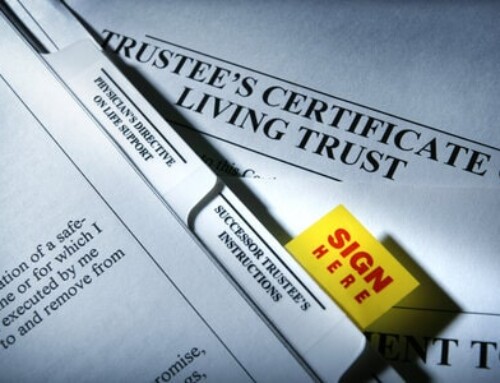 8 Steps for a Complete Estate Plan
8 Steps for a Complete Estate Plan
A complete estate plan is vital to protect your assets for your loved ones. In this article, we will go over 8 steps for a complete estate plan.
1. Inventory Your Estate
It is important to take an inventory of your estate, which is a list of all your valuable items. These include tangible and intangible items. Tangible items would include electronics, art, jewelry, vehicles, antiques, and property. Intangible items are accounts (checking, savings, investment, and retirement), insurance policies, and annuities.
2. List Debts
It is important to compile a list of all your current debts. This would include credit cards, auto loans, mortgages, or home equity lines of credit. Your list should contain the account numbers and contact information for each debt.
3. Review Retirement Accounts
Retirement accounts are designed to avoid probate through beneficiary designations. These beneficiary designations will supersede any instructions you have set forth in estate planning documents. It is important to periodically review your beneficiary designations to make sure they reflect your current wishes.
4. Update Insurance Policies
Like retirement accounts, insurance policies are distributed according to beneficiary designations. Periodically review them to make sure they are up to date.
5. Chose a Responsible Trustee
Your trustee is going to be the person responsible for administering your estate. This means they will oversee all your finances. This is a weighty responsibility, and it is important to choose someone you trust. This may be a family member or close friend or perhaps a financial institution provides trustee services. You can also nominate two people to act together as co-trustees.
6. Draft a Revocable Living Trust
A revocable living trust is an estate planning document that will distribute your assets without the interference of probate. Probate is the court process of distributing assets if you died with or without a will. In your trust you nominate a trustee to care for your assets when you no longer can and beneficiaries to receive your assets. A revocable living trust is a vital estate planning document.
7. Regularly Review Documents
You should review all your financial and estate planning documents at least every two years. Or if you experience a major life changing event such as marriage, divorce, births, or deaths.
8. Complete Other Important Documents
Aside from a revocable living trust, there are other important estate planning documents you should have in place. First is a financial power of attorney, this document allows you to name an agent(s) to care for your finances if you become unable to do so. Second, is a healthcare power of attorney, in this document you name an agent to make health care decisions for you if you are unable. Lastly, is a living will this document lets you outlive the type of treatment you would want to receive if you were terminally ill, comatose, or in a persistent vegetative state.
Taking Steps for a Complete Estate Plan
If you follow these 8 steps for a complete estate plan you will be set up for success in the future. It is important not to delay and get started on your estate planning right away.
Questions? Want to schedule an appointment? Contact us by clicking here.






Leave A Comment
You must be logged in to post a comment.